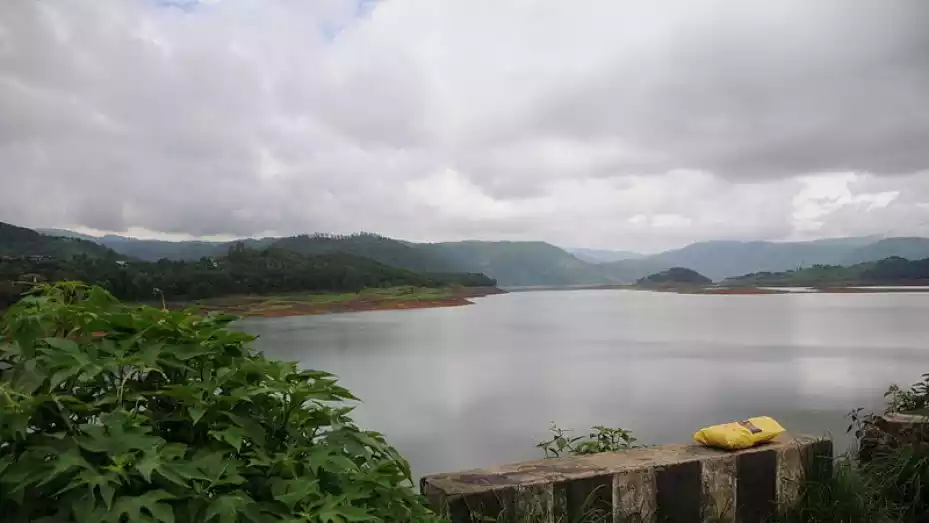Ri Bhoi District: A Comprehensive Overview
Introduction
Ri Bhoi district, located in the northeastern part of India, is a gem of Meghalaya state. Known for its rich cultural heritage, stunning landscapes, and vibrant communities, Ri Bhoi offers a unique blend of tradition and modernity. This comprehensive guide delves into the various aspects that make Ri Bhoi a remarkable district.
Demography
Ri Bhoi district is home to a diverse population comprising various ethnic groups, predominantly the Khasi tribe. The Khasis are known for their matrilineal society, where lineage and inheritance are traced through women. This unique societal structure significantly impacts the social dynamics and cultural practices in the region. The population also includes other indigenous tribes such as the Garos and the Jaintias, as well as a mix of communities from different parts of India.
Culture
The culture of Ri Bhoi is deeply rooted in traditional practices and folklore. Festivals are an integral part of the cultural fabric, with celebrations such as Shad Suk Mynsiem, Nongkrem Dance, and Behdeinkhlam highlighting the community’s love for dance, music, and rituals. Traditional attire, characterized by vibrant colors and intricate designs, adds to the visual splendor of these festivities. Handicrafts, including bamboo and cane products, pottery, and handwoven textiles, reflect the district's rich artisanal heritage.
Geography and Topography
Ri Bhoi is blessed with diverse geographical features, ranging from lush green valleys to rolling hills and dense forests. The district is part of the Khasi Hills and boasts a number of rivers, including the Umiam and Umtru, which are vital sources of water and support the region’s agriculture. The topography is characterized by undulating terrains, making it a picturesque destination for nature lovers and adventure enthusiasts. The Umiam Lake, also known as Barapani, is a major attraction, offering breathtaking views and recreational activities.
Cuisines
The culinary landscape of Ri Bhoi is as diverse as its culture. The local cuisine is primarily based on rice, meat, and vegetables, with a significant emphasis on fermented foods. Dishes like Jadoh (rice cooked with meat), Dohneiiong (pork with black sesame seeds), and Nakham Bitchi (dried fish soup) are staples. Fermented soybean paste, known as Tungrymbai, is a popular accompaniment. The use of locally available herbs and spices gives the food a distinct flavor profile. Traditional beverages, such as rice beer, are also widely consumed during festivals and social gatherings.
History
The history of Ri Bhoi is steeped in legend and tradition. Historically, the region was inhabited by various Khasi sub-tribes, each with its own chieftain (Syiem). These chieftains played crucial roles in maintaining law and order and managing communal affairs. The British colonial period brought significant changes, including the introduction of modern administrative systems. Ri Bhoi's strategic location made it a crucial area during the freedom struggle, with many local leaders actively participating in the movement against British rule.
Poets and Authors
Ri Bhoi has produced a number of notable poets and authors who have contributed to the rich literary tradition of Meghalaya. One of the most prominent figures is U Soso Tham, a renowned Khasi poet whose works reflect the beauty of the Khasi hills and the cultural ethos of the Khasi people. His poems, written in Khasi, are celebrated for their lyrical quality and deep philosophical insights. Contemporary writers continue to draw inspiration from the district’s landscape and traditions, enriching Meghalaya’s literary heritage.
Administration
Administratively, Ri Bhoi is divided into several blocks and circles, each managed by local governance structures. The district headquarters is located in Nongpoh, which serves as the administrative and economic hub. The Deputy Commissioner, along with various departmental heads, oversees the implementation of government schemes and development projects. Panchayati Raj institutions and traditional tribal councils (Dorbar Shnong) play significant roles in local governance, ensuring community participation in decision-making processes.
Education and Infrastructure
Education is a priority in Ri Bhoi, with numerous schools and colleges providing quality education to the youth. The district is home to several educational institutions, including higher secondary schools and colleges that offer a range of academic and vocational courses. Infrastructure development has seen significant progress in recent years, with improvements in road connectivity, healthcare facilities, and access to clean water and electricity. The presence of the North Eastern Hill University’s campus in the district has further boosted higher education opportunities.
Economy
The economy of Ri Bhoi is primarily agrarian, with agriculture being the mainstay for a majority of the population. The fertile land supports the cultivation of rice, maize, potatoes, and various fruits and vegetables. Horticulture, particularly the cultivation of pineapples, oranges, and areca nuts, plays a vital role in the local economy. Animal husbandry and poultry farming are also significant contributors. In recent years, tourism has emerged as a growing sector, attracting visitors to the district’s natural and cultural attractions.
Tourism
Ri Bhoi offers a plethora of attractions for tourists. The Umiam Lake is a major draw, offering boating, water sports, and scenic views. The Nongkhyllem Wildlife Sanctuary is home to diverse flora and fauna, making it a haven for nature enthusiasts and bird watchers. Adventure tourism, including trekking and camping in the lush forests and hills, is gaining popularity. Traditional Khasi villages, with their unique architecture and way of life, provide a glimpse into the rich cultural heritage of the region.
Suggested Diagram
Conclusion
Ri Bhoi district, with its rich cultural heritage, diverse demography, and breathtaking landscapes, stands as a testament to the beauty and resilience of Meghalaya. The district's blend of tradition and modernity, coupled with its commitment to development and education, makes it a remarkable region worth exploring. From its unique matrilineal society to its vibrant festivals and delicious cuisine, Ri Bhoi offers a tapestry of experiences that reflect the heart and soul of Meghalaya.
